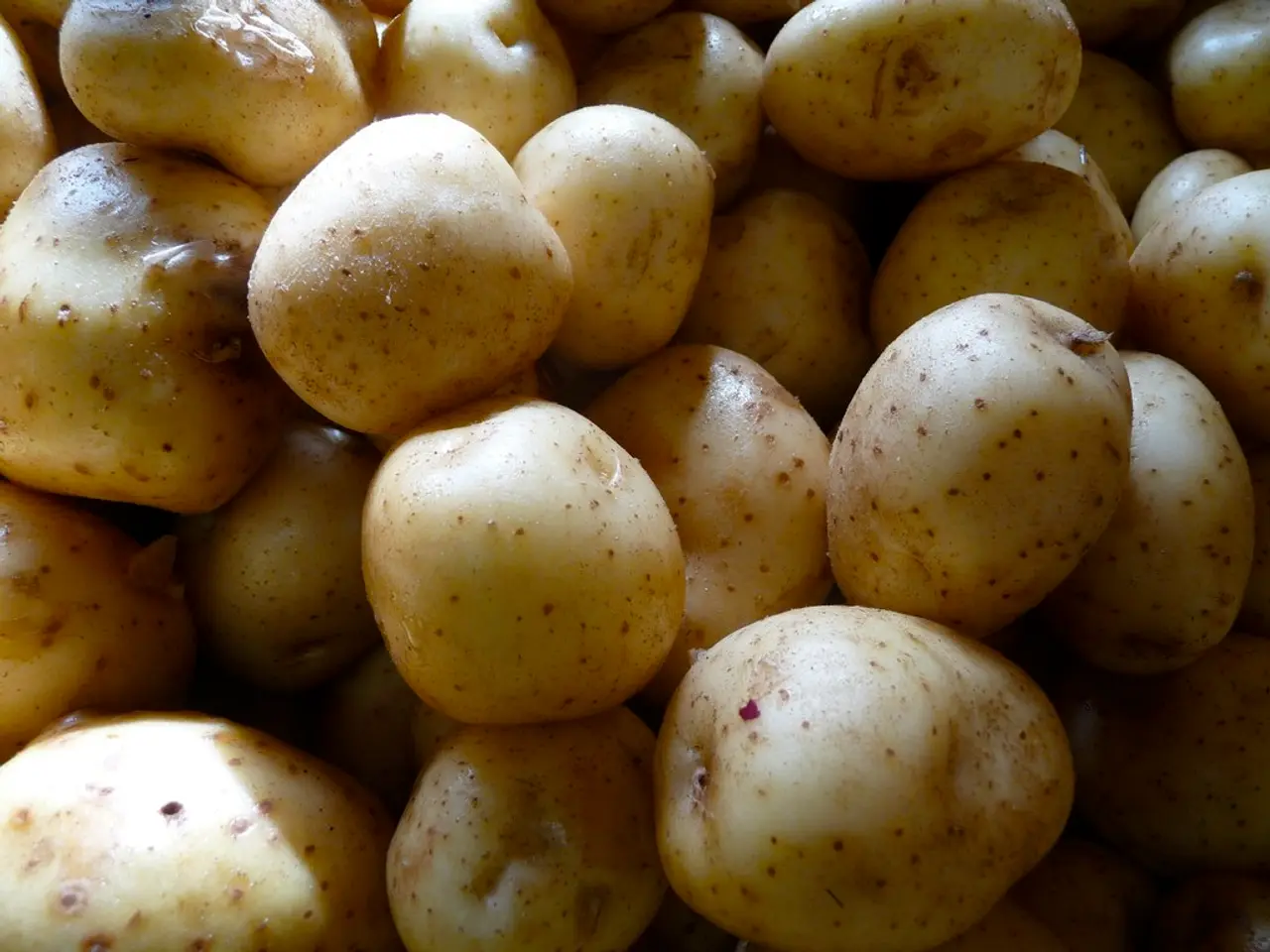Cultivating Sweet Potatoes in Iowa's Soil
Growing Sweet Potatoes in Iowa: A Comprehensive Guide
Sweet potatoes are a delightful addition to any garden, offering a versatile and nutritious root vegetable. Here's a step-by-step guide on how to grow sweet potatoes in Iowa.
Choosing the Right Location
Sweet potatoes thrive in warm, well-drained, and fertile soil with plenty of sunlight. Similar to potatoes, but requiring a longer growing season and warmer temperatures, sweet potatoes are a warm-season crop. Consider using loose, loamy or compost-rich soil with good drainage, and avoid compacted or rocky soil. If needed, consider raised beds.
Starting the Slips
Sweet potatoes are started from a vegetative stem tip cutting, or "slip". These slips should be disease and insect free and bought from reputable vendors. A good slip should be firm, green, and 8 to 12 inches long, preferably with one or two leaves.
Planting the Slips
Plant sweet potato slips after the danger of frost has passed and soil temperatures reach 65°F or higher. Space slips about 12-18 inches apart in rows 3 feet apart.
Caring for the Plants
Ensure even irrigation throughout most of the growing season, but limit water during the last four weeks before harvest to protect the developing roots from cracking. Keep plantings weed-free early in the season, but the vining nature of sweet potato will by itself smother and suppress many weeds. At the time of vining, sprinkle another 1 to 2 pounds of an all-purpose garden fertilizer around each sweet potato plant.
Harvesting and Curing
Harvest sweet potatoes about 90-120 days after planting when the foliage begins to yellow and die back. Carefully dig around the plants without damaging the roots. After harvest, sweet potatoes require curing to heal cuts, bruises, and reduce rots. A middle ground approach for home gardeners is to air dry sweet potatoes for 10-14 days in a warm and shady location.
Cultivars for Iowa's Climate
Suitable sweet potato cultivars for Iowa's climate include adapted varieties with shorter maturity periods and cold tolerance. Common cultivars for similar northern areas include ‘Beauregard’, ‘Georgia Jet’, or ‘Covington’.
A Word on Yam
Yams are different crops from sweet potatoes botanically and require tropical conditions, so they are generally not suitable for Iowa's climate. Yams are native to Africa and often confused with sweet potatoes in the U.S., but true yams need warmer, more humid conditions and are rarely grown commercially outside tropical regions.
In summary, sweet potatoes in Iowa need a warm growing season, well-drained fertile soil, regular watering, and harvesting after 90-120 days with curing before storage. Potatoes grow in similar soil but tolerate cooler conditions and shorter seasons. True yams differ fundamentally and are not feasible to grow in Iowa's climate.
- To ensure a successful sweet potato crop in Iowa, choose a location with warm, well-drained, and fertile soil that receives plenty of sunlight, preferably with loamy or compost-rich soil.
- Start sweet potatoes from disease and insect-free slips, which are vegetative stem tip cuttings that are firm, green, and 8 to 12 inches long, with one or two leaves.
- Plant the slips after the danger of frost has passed and soil temperatures reach 65°F or higher, spacing them about 12-18 inches apart in rows 3 feet apart.
- Care for sweet potato plants by providing even irrigation throughout most of the growing season, limiting water during the last four weeks before harvest to protect the developing roots from cracking. Keep plantings weed-free early in the season, and during the vining stage, apply an all-purpose garden fertilizer.




